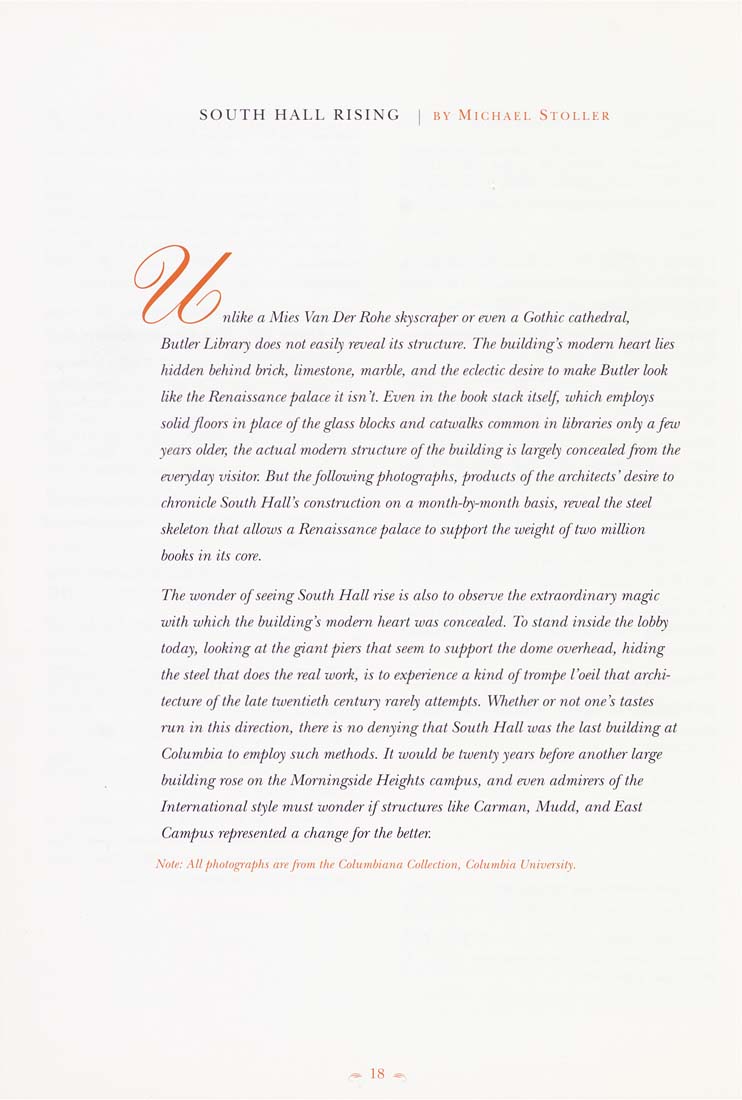Columbia Library columns (v.45(1996))
(New York : Friends of the Columbia Libraries. )
|
||
|
|
|
|
| v.45,no.2(1996:Autumn): Page 18 |

SOUTH HALL RISING I by Michakl Stoller nlike a Mies Van Der Rohe skyscraper or even a Gothic cathedral, Butler Library does not easily reveal its structure. The building's modern heart lies hidden behind brick, limestone, marble, and the eclectic desire to make Butler look like the Renaissance palace it isn 't. Even in the book stack itself, which employs solid floors in place of the glass blocks and catwalks common in libraries only a few years older, the actual modem structure of the building is largely concealed from the everyday visitor. But the following photographs, products of the architects' desire to chronicle South Hall's construction on a month-by-month basis, reveal the steel skeleton that allows a Renaissance palace to support the weight of two million books in its core. The wonder of seeing South Hall rise is also to observe the extraordinary magic with which the building's modern heart was concealed. To stand inside the lobby today, looking at the giant piers that seem to support the dome overhead, hiding the steel that does the real work, is to experience a kind oftrompe Toeil that archi¬ tecture of the late twentieth century rarely attempts. Whether or not one's tastes run in this direction, there is no denying that South Hall xvas the last building at Columbia to employ such methods. It would be twenty years before another large building rose on the Momingside Heights campus, and even admirers of the International style must wonder if structures like Carman, Mudd, and East Campus represented a change for the better. Note: All photographs are from the Columbiana Collection, Columbia University. |
| v.45,no.2(1996:Autumn): Page 18 |







